Day 1 of a 4-day Spring Migration tour in Norfolk. It was a lovely bright and sunny day, and warm too. It felt more like summer at times than spring. Great weather to be out in the countryside, if not the best for encouraging migrants to drop in. We spent the day on the North Norfolk coast.
There had been a Purple Heron around the last couple of days. It had flown past Cley in the fog early morning on 7th and yesterday afternoon was refound out on Blakeney Freshes. With reports saying it was still present, we headed there first to see if we could see it.
As we walked out on the bank, we could hear Sedge Warblers and a Reed Warbler singing from the reeds. A few people were gathered on the corner, staring into the ditch just below the path. Apparently the Purple Heron had just walked into the reeds not far from the bank, so we set up and started to scan.
We had only been there a minute or so when the Purple Heron walked out into the open on the grass beside the ditch. Great views! It walked back in, then out again, and after looking around for a minute or so it flew off away over the grazing marsh and dropped down into the edge of the ditch further back. What a lucky start!
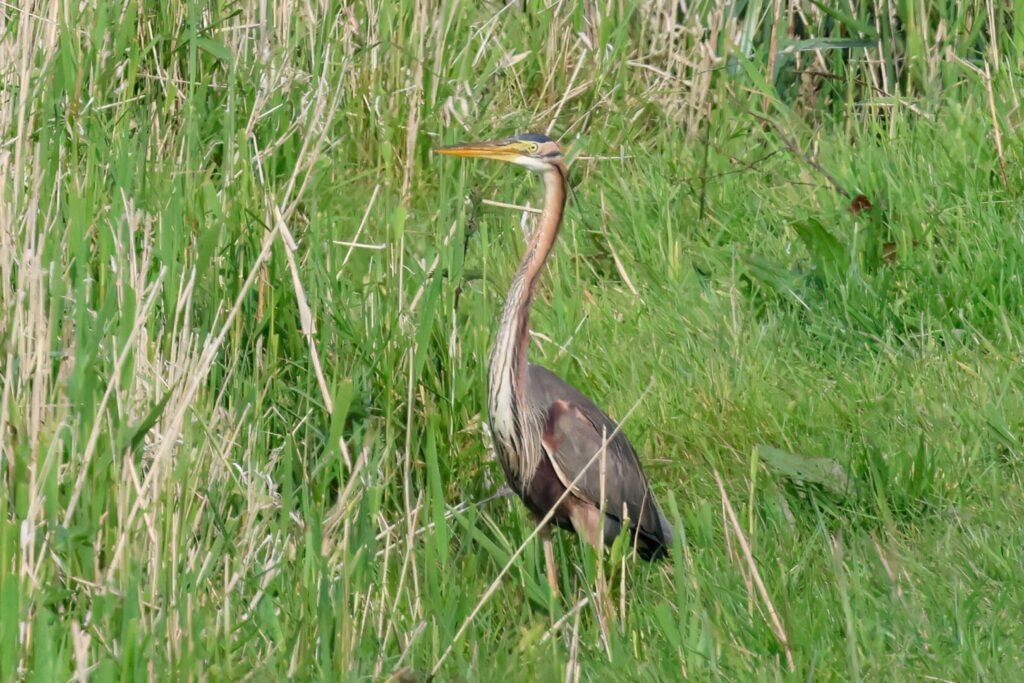
There were a couple of Marsh Harriers over the reeds further back, but there didn’t seem to be too much else to see here, so we walked back to the minibus and round to the East Bank. We parked at Walsey Hills and as we got out of the minibus we could see a Spoonbill feeding in the ditch on Pope’s Marsh. As we walked back along the road, a Little Grebe was diving at the back of Snipe’s Marsh and several Greylags honked noisily.
Up on the East Bank, a male Marsh Harrier was quartering over the reeds and gave us a nice fly past. Several Sedge Warblers and a Reed Warbler were singing around Don’s Pool and another Little Grebe surfaced in the middle. There were some more distant Bearded Tits showing occasionally over the reeds at the back.
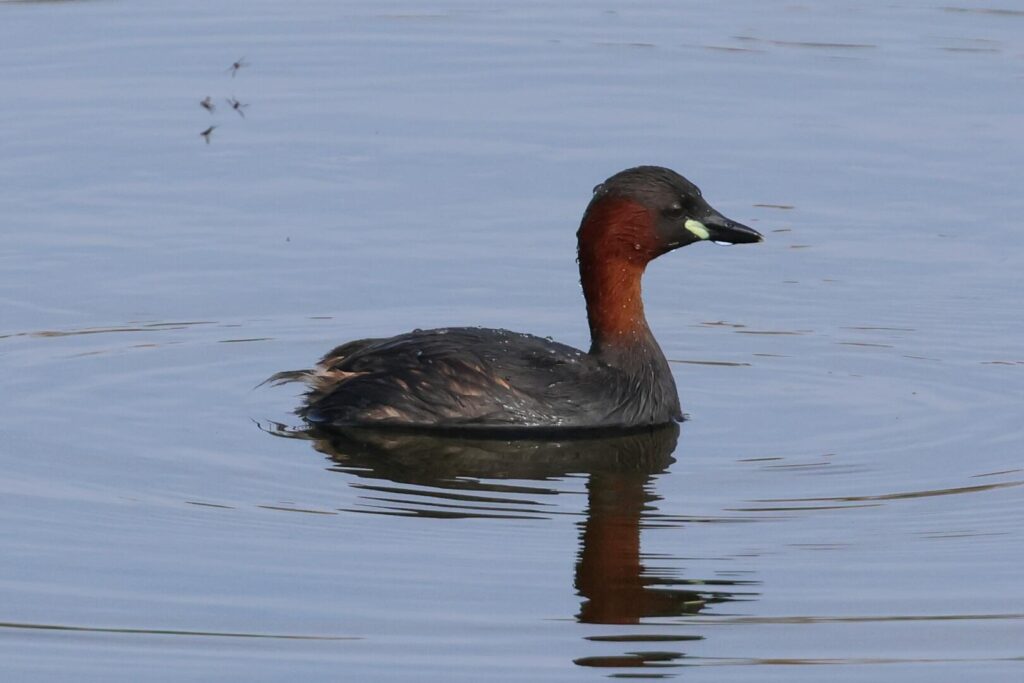
We walked on up the bank. There as more Bearded Tit activity further up, several birds flying in and out of the ditch below the bank, including a fresh-fledged juvenile at one point. We had nice views of several as they climbed up the reed stems and perched swaying in the tops, including several powder-blue headed, moustachioed males.
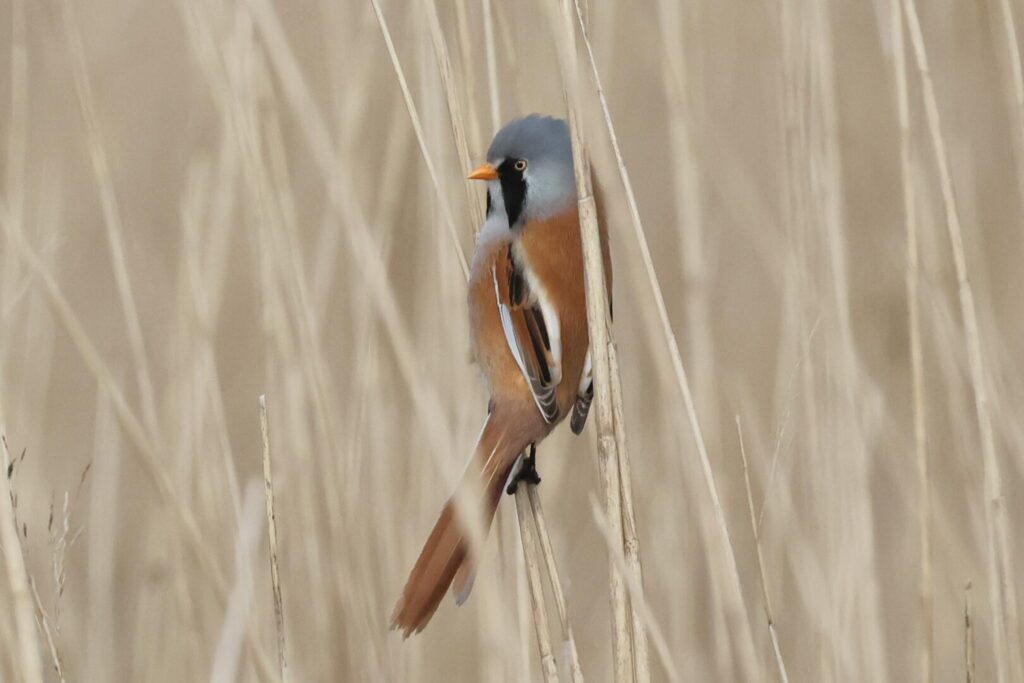
As it warmed up, a few raptors started to circle up. A Common Buzzard flew over high heading west and more were visible up over the ridge inland. We picked up a single Sparrowhawk circling up too and a Red Kite drifting past.
There were not many waders on the Serpentine. Lapwing numbers seem low this year. There were a few Redshanks, some displaying, a few Avocets and a single Little Ringed Plover which we got in the scope. We couldn’t find the lingering Wigeon today, but there was a scattering of Shoveler, Shelduck and Gadwall. The Spoonbill reappeared in one of the ditches out in the middle, so we got the scope on that too and watched it feeding.
We could see more waders out on Arnold’s Marsh, but we were looking into the sun from the East Bank so we decided to try from the shingle ridge. A quick scan of the Brackish Pools produced a smart breeding plumaged Turnstone and a couple of Dunlin.
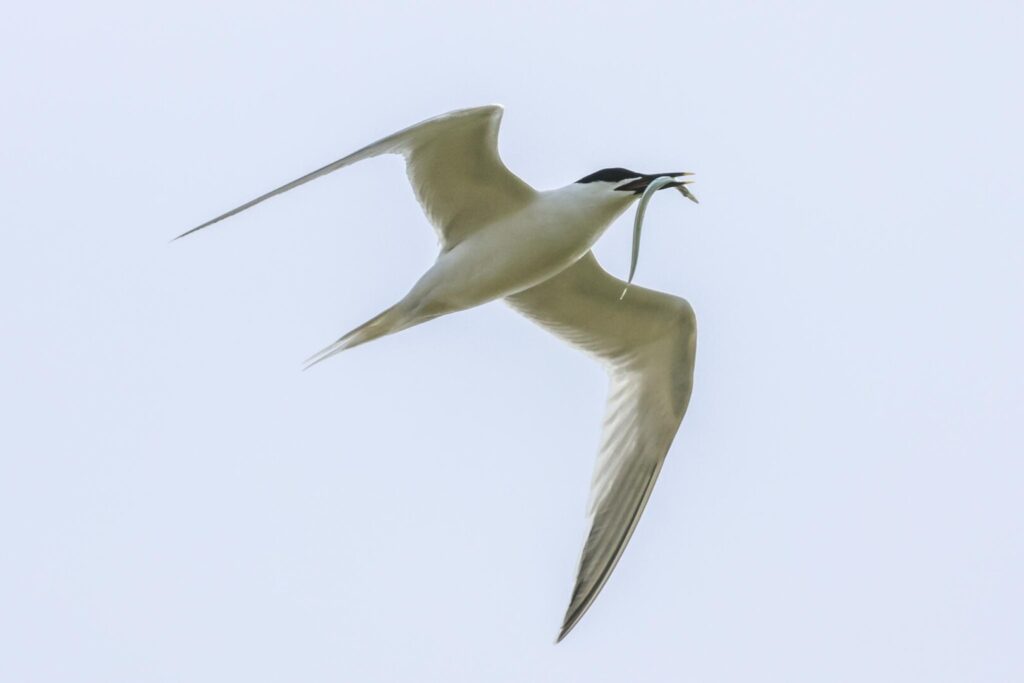
A couple of Little Terns were flying past as we got to the far end of the bank, so we had a quick look offshore. A few Sandwich Terns flew past too, several carrying fish, and more Little Terns, there seemed to be a small passage of terns moving this morning. A Whimbrel flew west over Arnold’s and two more out over the water, along with a few Oystercatchers and three Sanderling. A steady trickle of Swallows seemed to be on the move too, with birds flying past along the beach and out over the sea.
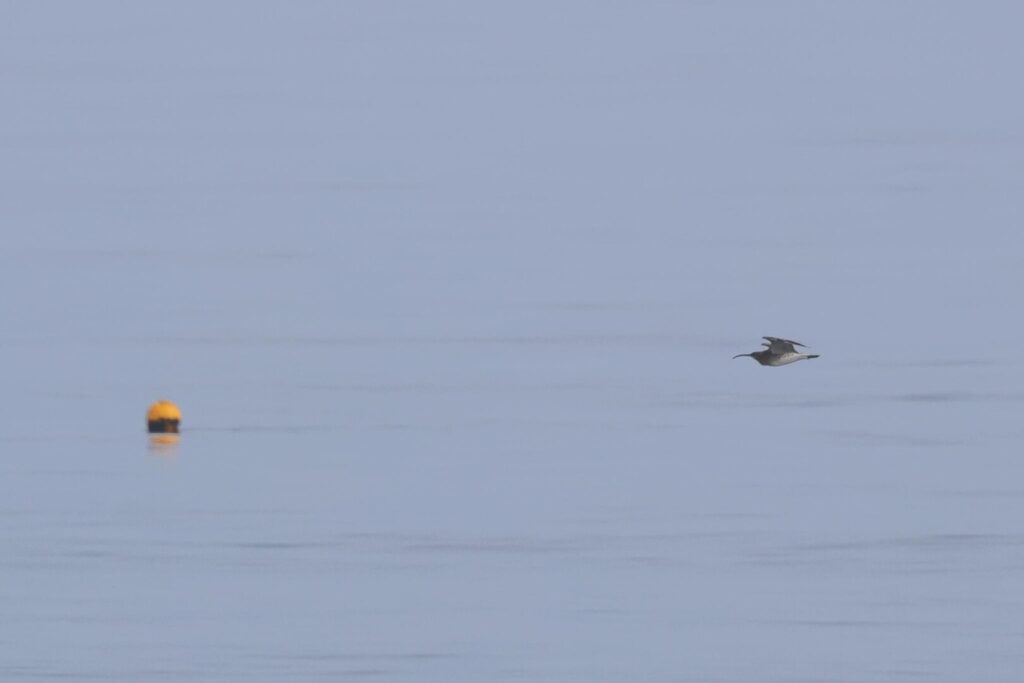
From the shingle ridge further along we had a better view of the waders on Arnold’s Marsh. There were good numbers of Dunlin, most now sporting their black summer bellies, along with more brightly coloured Turnstones. Some small groups of Ringed Plovers looked like northern birds, of the subspecies tundrae. A flock of four took off and headed on their way. There seemed to have been a bit of a clear out of birds overnight though, as there were not as many waders here today as there had been yesterday.
A couple of Little Terns flew in and landed on one of the islands. There were still more terns, waders and Swallows moving past offshore here. One of the group looking out behind us picked up a long line of 45-50 Common Scoter flying past too.
We made our way slowly back along the bank. Stopping to admire a little group of Bearded Tits again. A Lapwing was displaying out over Pope’s Marsh, nice to see given how few and far between they seem to be this year. A Mediterranean Gull called and we picked it up flying west over Arnold’s behind us.
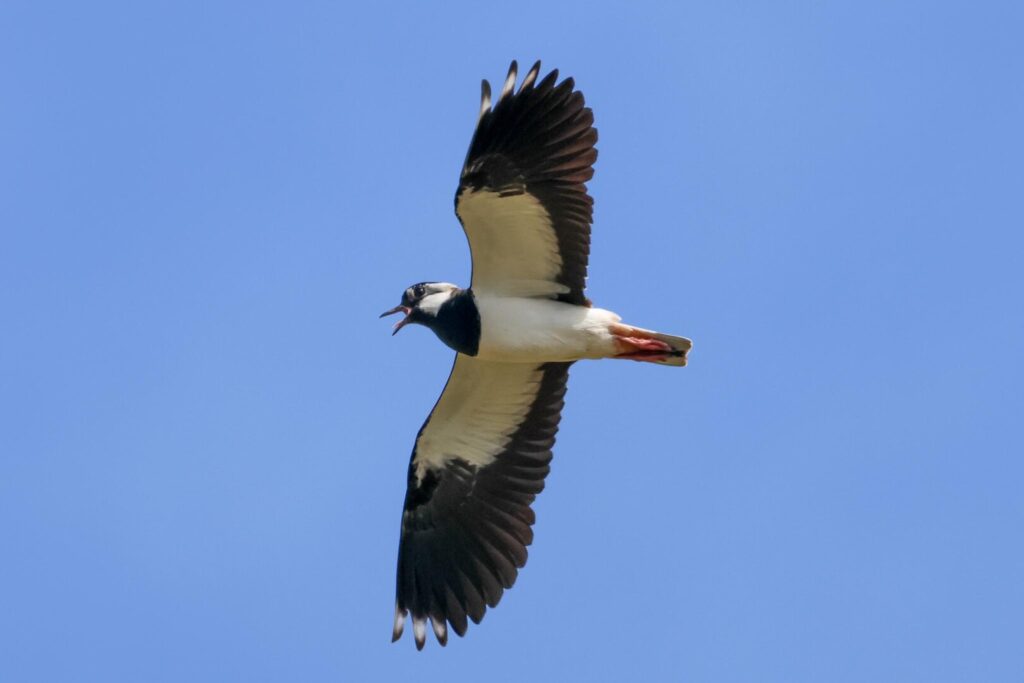
Back almost to the road, a Reed Warbler posed very nicely in the reeds right below the path. A Sedge Warbler was still singing away in its usual place too. We could compare the two songs – the regular, rhythmic Reed Warbler versus the chaotic, scratchy Sedge Warbler.
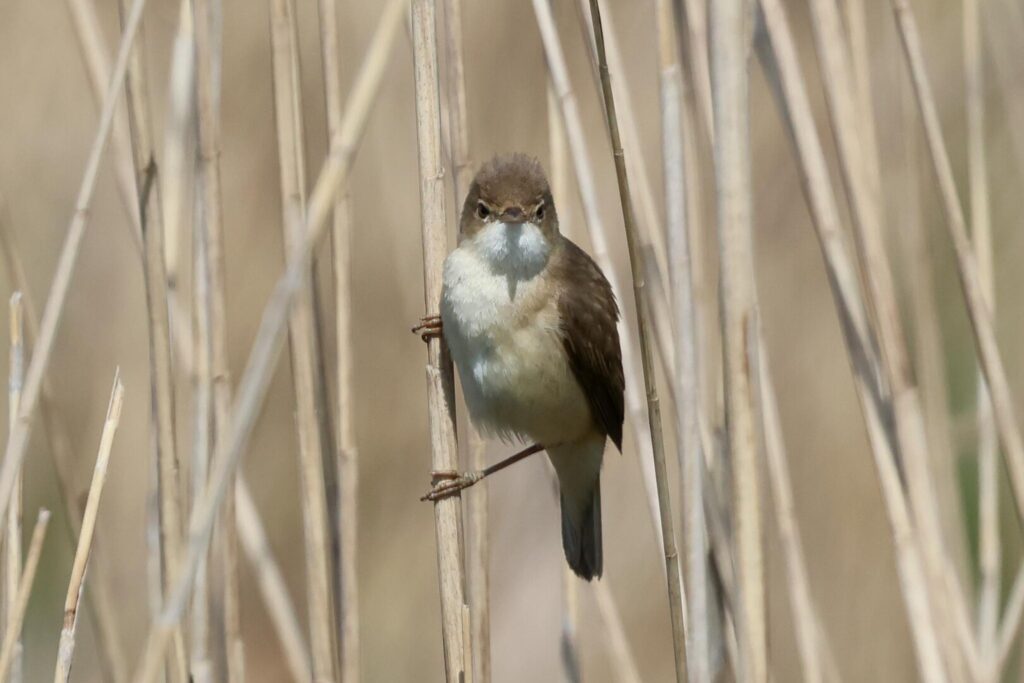
Then we headed round to the Visitor Centre for a quick break to use the facilities. Two Common Swifts flew over. There didn’t seem to be have been much found on the reserve this morning and we still had a little time before lunch, so we decided to try along the coast to Salthouse to see if anything had dropped in.
First we stopped at the Iron Road. There were more Sedge Warblers and Reed Warblers singing in the ditches and one or two Lapwings on the grazing marshes here too. The main pool is still rather full of water, so we scanned the muddy scrapes the other side to see if there were any waders. All we could find were a few Redshanks today. On the brackish pools below the shingle ridge, four Dunlin had stopped to feed.
We had another quick look out to sea. There were still a few terns passing by offshore, but the waders seemed to have dried up a bit. We did pick up two very distant adult Gannets flying east on the edge of the mist which was still hanging out towards the horizon.
Then we drove round to Beach Road and parked again. As we walked out towards Gramborough Hill, there was nothing on the small pool today. We heard a Yellow Wagtail call and looked over to see it flying past distantly over the grazing marshes and disappeared off over the minibus and away to the west.
There were a couple of pairs of Stonechats around the bushes and Reed Buntings and Linnets in and out of the brambles, but no sign of any migrants here today. Several Sand Martins flew round over the hill. On our way back to the minibus, two Grey Partridges crept away from the path through the grass on the edge of the grazing marsh.
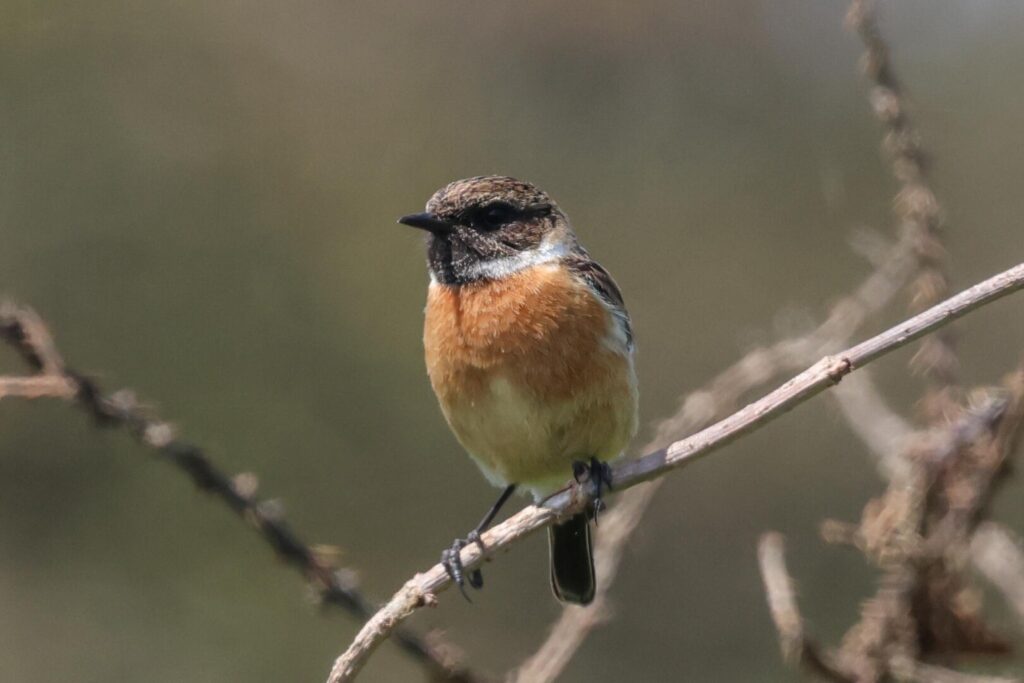
It was time for lunch, so we made our way back to the Visitor Centre. A report came through of three Temminck’s Stints on the Serpentine, where we had looked earlier this morning, but we decided to have lunch first and wait for an update. We were glad we did, as it turned out they had flown off almost immediately.
A Marsh Harrier circled low over the car park as we got out of the minibus and others drifted over the reedbed opposite the picnic area. At one point, a Marsh Harrier flew out over the scrapes and was pursued by a cloud of angry Avocets! A Great White Egret flew in and landed on Richardson’s scrape, just across the road from where we were eating. A couple of Hobbys were hawking for insects over North Foreland plantation.
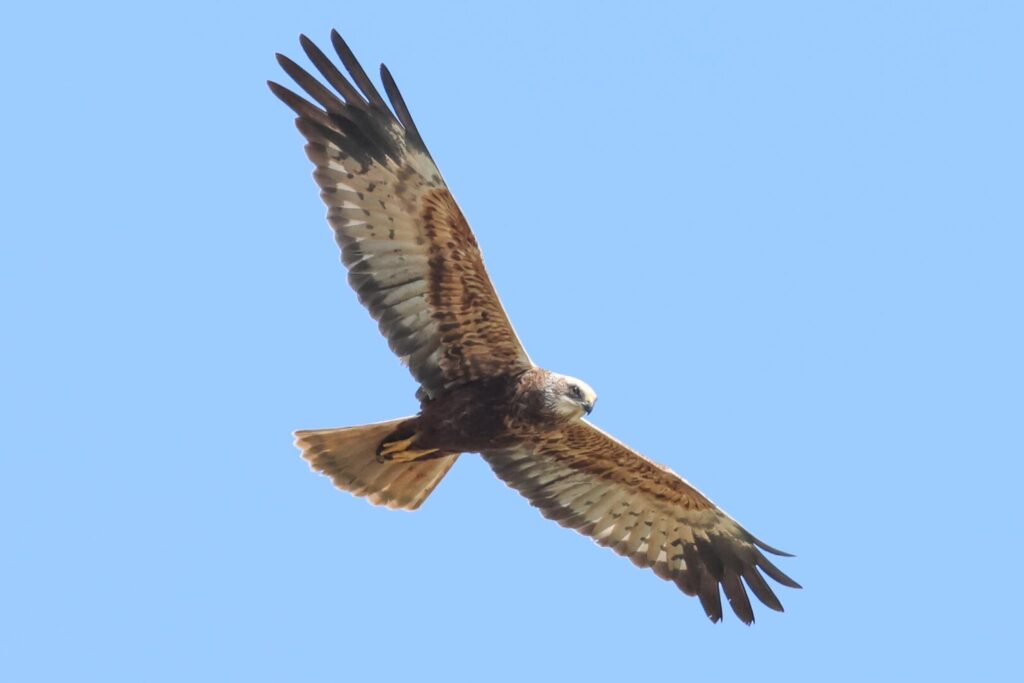
There was still no sign of the Temminck’s Stints, so we decided to move on and try our luck at Stiffkey. We had just arrived and started to walk along the path down towards the flood when a message came through to the say the Temminck’s Stints were now on one of the scrapes back at Cley. Typical!
A couple of Stock Doves flew up from the field by the layby as we crossed over to the path and walked down to check the floods. There were two Greenshanks feeding on the nearest muddy pool, along with a couple of Redshanks. A larger flock of Black-tailed Godwits was gathered on the edge of the deeper water further back, but we couldn’t see anything else of note. We had intended to have a look at the Fen next but decided to head back to Cley instead to see if we could catch up with the stints.
After checking in at the Visitor Centre and getting permits, we had just crossed the road to walk out to the hides when another message came through. The Temminck’s Stints had just flown over towards North Scrape! Back to the minibus, we drove round to the beach car park. A quick scan of the sea added a single Common Tern which was flying around over the wreck.
As we walked down along the beach, we had an update to say that the Temminck’s Stints were indeed on North Scrape and visible from the screen. Needless to say, when we got there they had flown off again. To add insult to injury, they had gone back to Simmond’s Scrape! There was very little else to see on North Scrape, so there was no other option than to head back round to the Visitor Centre.
This time, thankfully, we got all the way out to Daukes Hide without any more messages. The Temminck’s Stints were still present, all three of them, and we got them in the scope. They were asleep at first, on one of the smaller islands towards the back, but then woke up and started feeding. One came onto one of the slightly closer islands at one point, but they mostly kept to the back of the scrape.
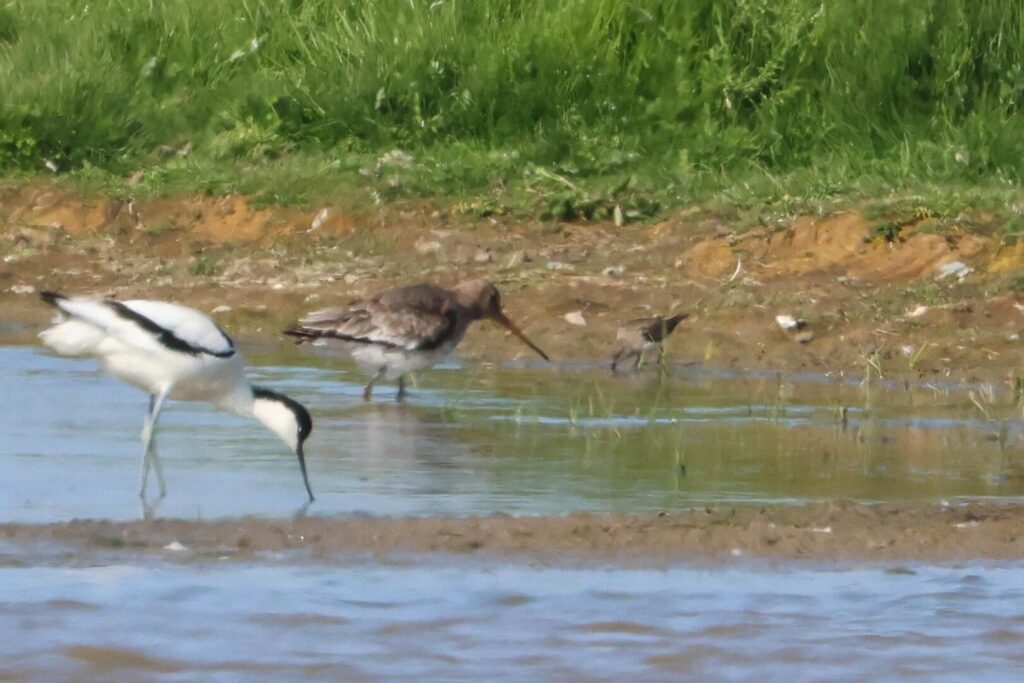
Scarce migrants here, Temminck’s Stints pass through on migration from their wintering grounds mostly in Africa to breed in the far north of Scandinavia and across into Russia. We normally see a few in spring, but they are much rarer later in the year. A nice bird to see so worth the extra effort this afternoon.
We had a bit more time to enjoy the scrapes now. There were lots of Avocets, many now on nests. Some small parties of Black-tailed Godwits were feeding around the scrapes and in with them we found a couple of very smart birds in full rusty breeding plumage. A couple of Little Ringed Plovers were on the nearest island on Simmond’s Scrape.
There were a few ducks, mainly Shelduck and Gadwall, plus three lingering Teal. A family party of Egyptian Geese walked up over the bank right in front of the hide to cross from Simmond’s to Pat’s Pool.
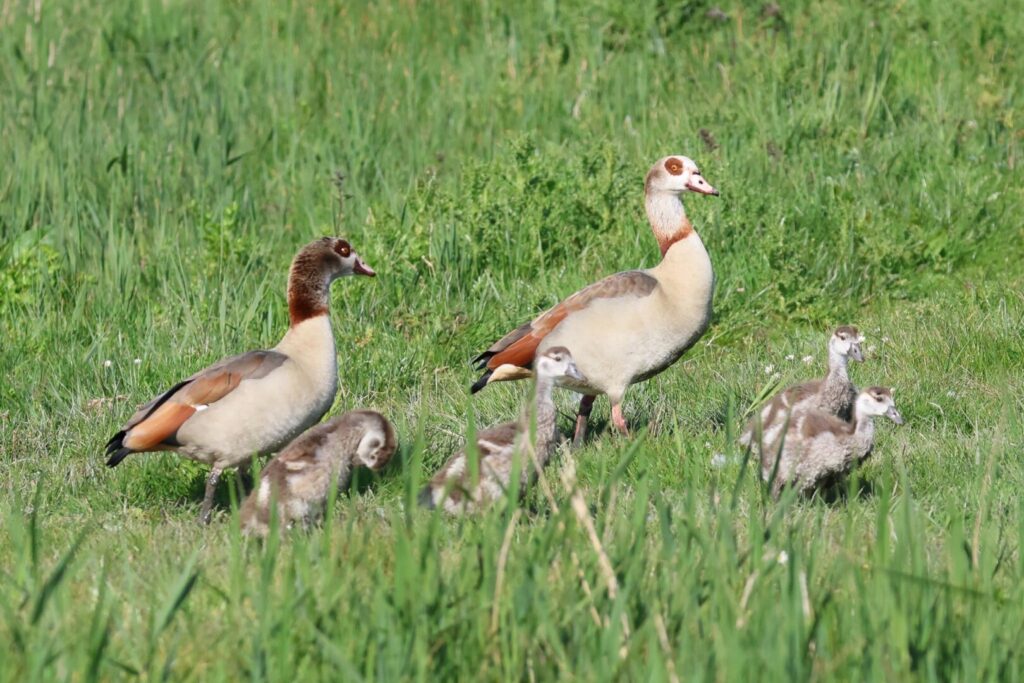
It had been an interesting first day, with some very good birds seen. Some required a bit more effort to get to see than others! Hopefully more to come tomorrow.
















